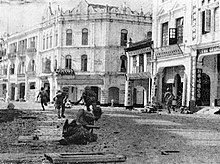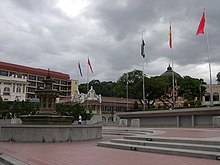Evidence of human habitation in Malaysia dates back 40,000 years.The Malay Peninsula was known to ancient Indians as Suvarnadvipa or the "Golden Peninsula", and was shown on Ptomely's map as the "Golden Peninsula". Traders and settlers from India and China arrived as early as the first century of the common era, establishing trading ports and towns in the area in the 2nd and 3rd centuries CE. Both had a strong influence on the local culture. In the early centuries of the first millennium, the people of the Malay Peninsula adopted the Indian religions of Hinduism and Buddhism, as well as the use of the Sanskirt writing system.Between the 7th and the 13th century, much of Peninsular Malaysia was under the Srivijaya empire, which was centered in Palembang on the island of Sumatra. After the fall of Srivijaya, the Java-based Majapahit empire had influence over most of Indonesia, Peninsular Malaysia, and the coasts of Borneo island. In the early 15th century, Parameswara, a prince of the former Srivijayan empire, established a dynasty and founded what would become the Malacca Sultanate, commonly considered the first independent state in the peninsula. Parameswara became a Muslim, and Malacca's prominent position and economic power allowed this faith to spread to neighbouring states, leading is to become the dominant religion among Malays by the 16th century.
After WWII, following the Japanese invasion and subsequent occupation of Malaya, popular support for independence grew. Post-war British plans to unite the administration of Malaya under a single crown colony called the Malayan Union foundered on strong opposition from the Malays, who opposed the emasculation of the Malay rulers and the granting of citizenship to the ethnic Chinese. The Malayan Union, established in 1946 and consisting of all the British possessions in the Malay peninsula with the exception of Singapore, was dissolved in 1948 and replaced by the Federation of Malaya, which restored the autonomy of the rulers of the Malay states under British protection. During this time, rebels under the leadership of the Malayan Communist Party launched guerrilla operations designed to force the British out of Malaya. The Malayan Emergency, lasted from 1948 to 1960, and involved a long anti-insurgency campaign by Commonwealth troops in Malaya. In 1963, Malaya along with the then British crown colonies of Sabah, Sarawak and Singapore, federated to form Malaysia. The proposed date for the formation of Malaysia was 31 August 1963, to coincide with the independence day of Malaya and the British giving self-rule to Sarawak and Sabah. But, the date was delayed until September 16, 1963, due to opposition from the Indonesian government led by Sukarno and attempts by the Sarawak United People's Party to delay the formation of Malaysia. Independence, in its initial period, Singapore's eventual exit in 1965, and racial strife in the form of race riots in 1969.After the 13 May race riots of 1969, the controversial New Economic Policy—intended to increase proportionally the share of the economic "pie" of the bumiputras ("indigenous people", which includes the majority Malays, but not always the indigenous population) as compared to other ethnic groups—was launched by Prime Minister Tun Abdul Razak. Malaysia has since maintained a delicate ethno-political balance, with a system of government that has attempted to combine overall economic development with political and economic policies that promote equitable participation of all races.
Under the premiership of Mahathir bin Mohamad, Malaysia experienced economic growth from the 1980s, a 1985-86 property market depression, and returned to growth through to the mid-1990s. The period saw a shift from an agriculture-based economy to one based on manufacturing and industry in areas such as computers and consumer electronics. It was during this period, too, that the physical landscape of Malaysia changed with the emergence of numerous mega-projects. Notable amongst these projects were the construction of the Petronas Twin Towers (at the time the tallest building in the world, and, as of 2010, still the tallest twin building). In the late 1990s, Malaysia was shaken by the Asian financial crisis as well as political unrest caused by the sacking of the deputy prime minister Dato' Seri Anwar Ibrahim. In November 2007, Malaysia was rocked by two anti-government rallies. They were precipitated by allegations of corruption and discrepancies in the Malaysian election system that heavily favoured the ruling political party, Barisan Nasional, which had been in power since Malaysia achieved its independence in 1957.


No comments:
Post a Comment